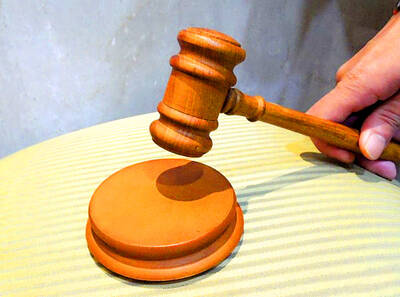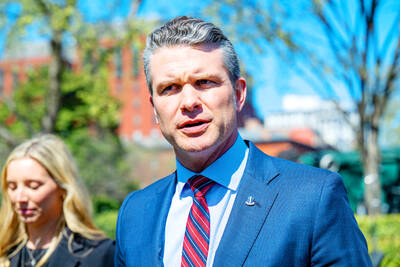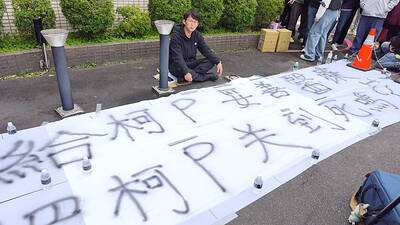Divisions have started to appear within Taiwan's opposition as the parties contesting President Chen Shui-bian's (
While opposition hardliners have insisted that anti-Chen protests in the capital should continue, moderates fear that further demonstrations will alienate their middle-class supporters who are calling for stability, observers say.
And they believe that the under-fire Chen, leader of the pro-independence Democratic Progressive Party (DPP), could cash in on the apparent split.
"The noises from the opposition have provided the DPP a chance to reduce the pressure by switching the limelight from the disputed election to the emerging conflict within the opposition," said Wu Tung-yeh (吳東野), professor of National Chengchi University's Institute of International Relations.
Since the March 20 ballot, tens of thousands of opposition supporters have protested Chen's victory. He beat his opponent, Chinese Nationalist Party (KMT) Chairman Lien Chan (連戰), by less than 30,000 votes, or 0.22 percent of the vote.
Lien and his allies have demanded an independent inquiry into the election-eve shooting of Chen and Vice President Annette Lu (
The opposition has also demanded an amendment to existing election laws and a recount of the ballots. Legal wrangling over the recount is under way.
But while some KMT politicians have been more outspoken in their criticism than others, the most prominent attacks have come from the People First Party (PFP), which joined the KMT in order to challenge Chen in the polls.
"The PFP tends to be radical," said Emile Sheng (

The High Prosecutors’ Office yesterday withdrew an appeal against the acquittal of a former bank manager 22 years after his death, marking Taiwan’s first instance of prosecutors rendering posthumous justice to a wrongfully convicted defendant. Chu Ching-en (諸慶恩) — formerly a manager at the Taipei branch of BNP Paribas — was in 1999 accused by Weng Mao-chung (翁茂鍾), then-president of Chia Her Industrial Co, of forging a request for a fixed deposit of US$10 million by I-Hwa Industrial Co, a subsidiary of Chia Her, which was used as collateral. Chu was ruled not guilty in the first trial, but was found guilty

DEADLOCK: As the commission is unable to forum a quorum to review license renewal applications, the channel operators are not at fault and can air past their license date The National Communications Commission (NCC) yesterday said that the Public Television Service (PTS) and 36 other television and radio broadcasters could continue airing, despite the commission’s inability to meet a quorum to review their license renewal applications. The licenses of PTS and the other channels are set to expire between this month and June. The National Communications Commission Organization Act (國家通訊傳播委員會組織法) stipulates that the commission must meet the mandated quorum of four to hold a valid meeting. The seven-member commission currently has only three commissioners. “We have informed the channel operators of the progress we have made in reviewing their license renewal applications, and

‘DENIAL DEFENSE’: The US would increase its military presence with uncrewed ships, and submarines, while boosting defense in the Indo-Pacific, a Pete Hegseth memo said The US is reorienting its military strategy to focus primarily on deterring a potential Chinese invasion of Taiwan, a memo signed by US Secretary of Defense Pete Hegseth showed. The memo also called on Taiwan to increase its defense spending. The document, known as the “Interim National Defense Strategic Guidance,” was distributed this month and detailed the national defense plans of US President Donald Trump’s administration, an article in the Washington Post said on Saturday. It outlines how the US can prepare for a potential war with China and defend itself from threats in the “near abroad,” including Greenland and the Panama

Taiwan People’s Party (TPP) Chairman Huang Kuo-chang (黃國昌) yesterday appealed to the authorities to release former Taipei mayor Ko Wen-je (柯文哲) from pretrial detention amid conflicting reports about his health. The TPP at a news conference on Thursday said that Ko should be released to a hospital for treatment, adding that he has blood in his urine and had spells of pain and nausea followed by vomiting over the past three months. Hsieh Yen-yau (謝炎堯), a retired professor of internal medicine and Ko’s former teacher, said that Ko’s symptoms aligned with gallstones, kidney inflammation and potentially dangerous heart conditions. Ko, charged with